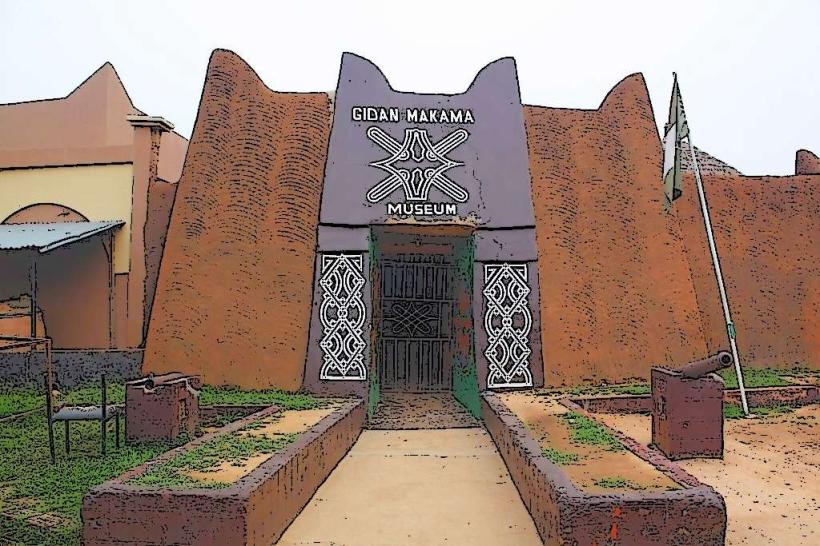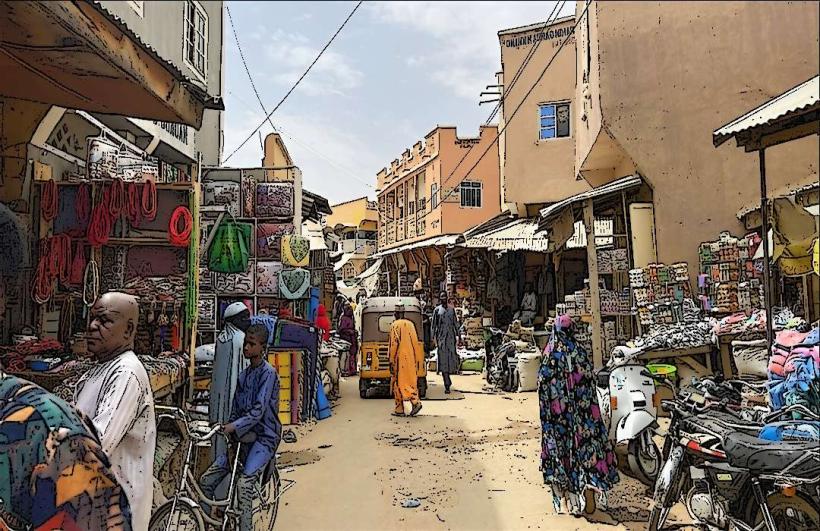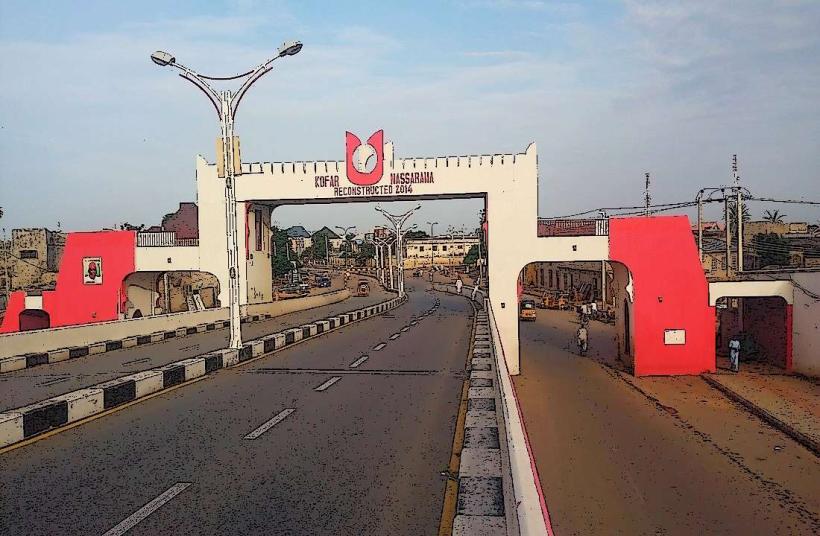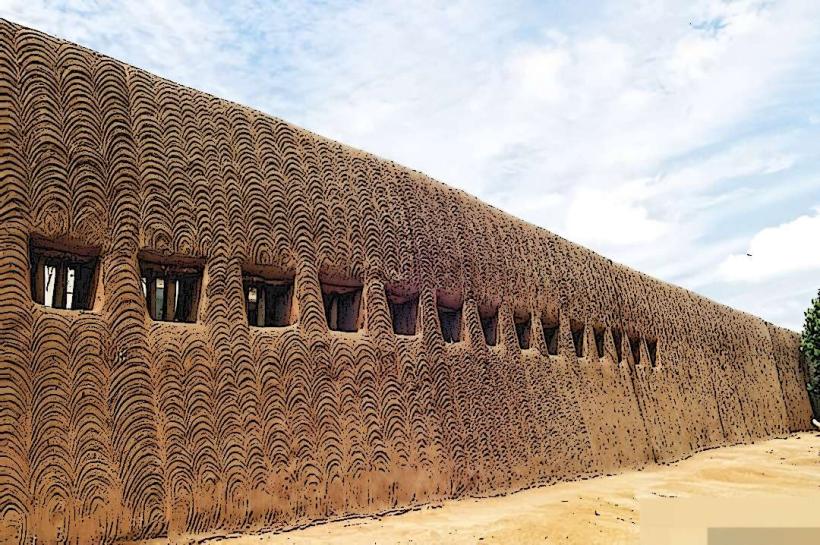Information
Landmark: Dala Hill (Dutsen Dala)City: Kano
Country: Nigeria
Continent: Africa
Dala Hill (Dutsen Dala), Kano, Nigeria, Africa
Overview
Dala Hill, called “Dutsen Dala” by locals, rises as a striking landmark in Kano, Nigeria, rich with history and tradition, not only that right in the city’s center, it carries centuries of history and still stands as a proud reminder of Kano’s beginnings, its antique walls warm in the afternoon sun.Rising about 534 meters-1,755 feet-above sea level, the hill gives sweeping views of the city, from its winding streets to the glint of rooftops in the sun, while dala Hill holds deep historical ties to Kano’s beginnings, rising from the earth like a silent witness to the city’s first days.Local legend and historic records say the city began here in the 7th century, on the hill called “Dala,” where dry grass still whispers in the wind, on top of that that puts it among the oldest settlement sites in the region, where weathered stone paths still mark its age.Long ago, the hill bustled with ironworkers, their hammers ringing out in one of ancient Kano’s first technological crafts, furthermore it became the heart of the community’s growth, a busy hub where ideas took root and neighbors gathered, anchoring the area like a solid stone foundation.Interestingly, Dala Hill is famous for its deep ties to the early history of the Hausa people, where ancient stories still echo across its rocky slopes, consequently the hill dominated the early settlements, its slopes and nearby fields shaping where people built their homes.Locals say ancient warriors once scanned the horizon from its crest, watching for trouble in the distance, at the same time around this hill, a tight-knit community took root, laying the groundwork for the bustling city of Kano that would one day spread far beyond its rocky slopes.Beyond its historical role, Dala Hill lives on in the region’s legends and traditions, where stories of ancient kings still echo through the dusty market streets, while locals tie the hill to antique myths and cherished tales, weaving it deep into Kano’s cultural identity, much like the sound of drums at a festival.Not surprisingly, It’s more than a landmark-it carries the spirit of Kano’s people, as surely as the scent of spice drifts through the city’s markets, moreover long ago, the city’s first settlers, warriors, and elders met atop the hill, their voices carrying on the wind.The setting buzzed with cultural life, where people gathered for crucial rituals and shared traditions by the glow of firelight, meanwhile over the years, the hill took on a life of its own in local folklore, turning up in fireside tales and whispered stories handed down from grandparents to wide-eyed children.It helped build the city from the ground up, and that history turned it into a symbol of resilience and strength-like stone walls that have weathered a hundred storms, while though it’s steeped in history and culture, Dala Hill now faces serious hurdles, from crumbling stone steps to the weight of neglect.Rapid-growing neighborhoods are crowding the hill’s base, where novel houses edge closer and piles of trash collect, putting its preservation at risk, not only that traffic and current buildings are crowding the hill’s surroundings, squeezing this quiet, historic landmark, moderately In a way, The ancient stairway to the top of Dala Hill has crumbled, its steps cracked and uneven, after that because of this, both visitors and locals have a hard time reaching the hilltop, which means fewer people get to take in the sweeping view from above.The crumbling path makes it hard for Dala Hill to shine as both a treasured piece of history and a draw for visitors, with loose stones catching underfoot, as a result recognizing Dala Hill’s significance, people have worked to restore and protect it, even clearing overgrown paths that lead to its peak.People keep urging officials to rebuild the vintage stairway, the one whose worn wooden steps once made reaching the summit a breeze, while preservation efforts work to shield the surrounding environment from the harsh effects of urban growth and pollution, keeping the air clear and the trees standing, to some extent We aim to keep Dala Hill’s rich history and culture intact, yet open its winding paths to both curious travelers and the people who call it home, at the same time they’ve worked to turn the hill into a spot travelers want to observe, even adding signs that catch your eye from the road.Raising awareness of its historical and cultural importance could help teach visitors about Kano’s rich heritage, from the echo of ancient market bells to the scent of freshly dyed fabrics, along with these initiatives aim to keep Dala Hill woven into the city’s identity, so future generations can still roam its stone paths and feel its history under their feet, slightly often For those who make the climb up Dala Hill, each step brings a vivid sense of the past-you can almost feel the worn stone under your shoes, while the climb’s steep, and it’ll leave your legs burning, but at the top you’re greeted with sweeping city views and rolling hills fading into the horizon, mildly From the summit, you can take in all of Kano, rooftops stretching to the horizon, and view how the city has grown and changed over the years, to boot the path up the hill is in rough shape, so visitors should take their time and step carefully, especially where loose stones crunch underfoot.Worn steps and a rough trail often need repair, which can make it hard for some visitors to explore the area from end to end, not only that even with the challenges, plenty of people still make the trek up the hill, feeling the worn stones underfoot as they take in its history for themselves.In the end, Dala Hill isn’t only a striking piece of land-it carries the weight of Kano’s long, rich history, standing like a watchful giant over the city, after that it helped shape the city’s early settlement, carries deep cultural meaning, and links to local legends-like the heritage tale whispered about the river at dusk-making it a treasured part of the region’s heritage.The hill faces its share of modern challenges, yet steady work to preserve and breathe fresh life into it keeps hope alive that future generations will wander its paths, hear the wind in the grass, and value what it stands for, not only that a trip to Dala Hill pulls you back in time, where wind brushes your face and Kano’s history rises from stone and earth.
Author: Tourist Landmarks
Date: 2025-09-23








